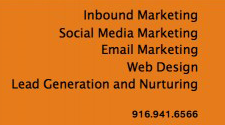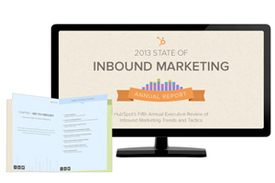Social Media Marketing Doesn't Work for Most Companies.
As more and more businesses jump on the social media wagon, many are seeing a disappointing lack of results. Could it be that social media marketing isn't all it's cracked up to be? Or is it that most businesses have yet to grasp how to successfully use social media and/or don't know what to measure or how to measure it? Our money is on the latter.

Social Media Marketing Needs a Purpose
As with any business effort, social media marketing needs to be designed starting with the goal and working backwards. We see too many companies launching Facebook pages , Twitter accounts, and Pinterest pages without any idea of what they aim to gain from them other than the exposure. They count Likes, Views, and Retweets, but don't align those numbers with business activities.
What do you really want to measure? Revenue? Store traffic? Customer satisfaction? Sales leads? The length of sales cycle? Decide what will make your campaign a success and build your effort around those goals!
Social Media Marketing is Not a Stand-Alone Effort
Companies want social media to replace other efforts. While there may come a day where it can, we don't believe it's an either/or proposition, but a "both/and" one. Social media is a great way to increase conversation with customers and prospects. It can even increase your exposure among the general public. But it will never replace your web site, your press releases, or your sales team.
Social media marketing should be designed to enhance your current efforts, not replace them. Social media marketing should be used to promote your web site content, drive links to your landing pages, show off your press efforts, and generally highlight the marketing efforts you'd be doing anyway. Social media marketing also helps create conversation that other media can't.
Don't fall into the trap of shilling for your company non-stop - nothing will get you ignored faster! Using your social media stream as an advertising venue is a major mistake made by the majority of social media marketers who aren't seeing the desired results. A good rule of thumb is to keep promotional messages to about 20% of your posts. That doesn't mean you can't talk about your business, you can, but don't be selling all the time.
Done right, social media has a multiplying effect on your other marketing efforts. It will help with branding, sales, traffic generation, lead builiding, but you need to combine it with your ongoing efforts.
Use Social Media Conversationally
You don't walk into a networking event or a cocktail party and immediately start to sell to the first person you approach, yet businesses who are unsuccessful with their social media marketing do exactly this online. It's important to remember that people don't want to be sold - they want to buy. And whether you influence their purchase or not, at the end of the day, the decision to purchase from you will theirs.
Know what's important to your customers. Address those issues before they ask you to. Be a source of information. Ask questions, provide answers. Stimulate thought and conversation. In these ways your prospects and customers will enjoy engaging with you. If every time they see you they know they're about to get a sales pitch, they'll soon be avoiding you. And who wouldn't, right?
Be Interesting
You don't need to come up with all your own subject matter for every post. Instead tap the many resources at your fingertips - the daily news, trending topics on Twitter, stories of interest in your community. Find topics your audience is already interested in contribute to the conversation.
This serves to make your posts more popular and will cause people to look for your posts out of interest.
Social Media Marketing, Done Right, Does and Will Work!
Social media marketing is still new for many companies. Keep at it! Focus on outcomes and build your efforts to drive those outcomes. Integrate with your other marketing efforts. Don't be shill. Work to be a source that people seek out. Do these things consistently, and social media marketing will pay off in spades!
 Why the disconnect? 73% of digital marketers agree that brands are becoming publishers and 64% believe content marketing is becoming its own discipline (we'd argue that it always has been). Yet no strategy to support the effort? That's nuts!
Why the disconnect? 73% of digital marketers agree that brands are becoming publishers and 64% believe content marketing is becoming its own discipline (we'd argue that it always has been). Yet no strategy to support the effort? That's nuts!














